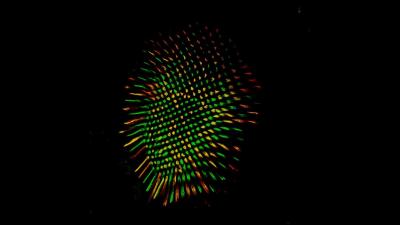
Fly retina showing all R8 photoreceptors in green and yR8 receptors in red (Credit: Sarah Heath/Behnia lab/Columbia University's Zuckerman Institute).
Columbia scientists have identified a brain circuit that drives fruit flies’ ability to see in color — and found that it bears a striking resemblance to the circuitry behind our own capacity for color vision. These findings shed light on the fundamental, yet mysterious, process by which information about light waves is transmitted from the eye to the brain. This research will not only fuel new investigations into how color vision works in flies and humans, but could also spur efforts to develop algorithms that help computers see in color.